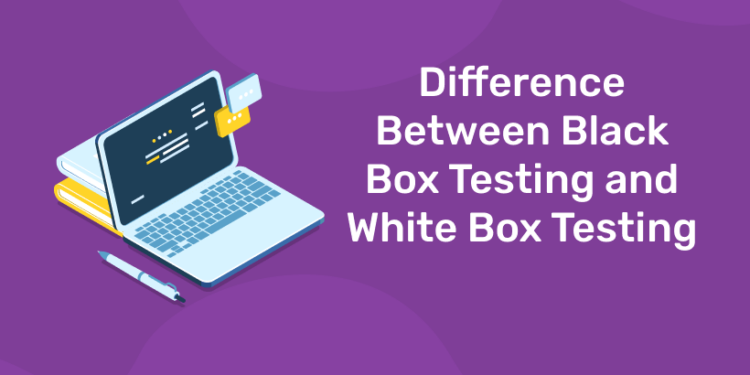Table of Contents
Key Takeaways:
- Software testing requires a balance between validating what the user experiences (Black Box) and verifying the internal correctness of the code (White Box). Both are essential for delivering reliable and secure applications.
- Black Box Testing reflects the user perspective by focusing on software functionality based on inputs and expected outputs, making it ideal for system, acceptance, and UI testing without requiring programming knowledge.
- White Box Testing delves into the software’s internal logic, inspecting code paths and structures to detect subtle bugs early in development, helping improve code quality and robustness through techniques like code coverage and path testing.
- Combining these methods leads to comprehensive testing coverage—Black Box Testing validates that software meets user needs while White Box Testing ensures internal code quality and security, reducing risks of failures and vulnerabilities.
- The right approach depends on project needs, but using both strategically throughout the software lifecycle maximizes test effectiveness, offering a strong defense against defects and delivering better end-user experiences.
Introduction
In today’s fast-paced digital world, software powers everything from the apps on our phones to complex systems running global operations. We expect software to work seamlessly, yet behind that smooth experience lies rigorous testing ensuring every click, swipe, or transaction is flawless. Think about when you use an app to order food—you care about how the app responds to your inputs, but software testers need to dig deeper, verifying both what you see and the hidden code that powers it. That’s where Black Box and White Box testing come into play.
Understanding these testing approaches not only helps improve software quality but also equips developers, testers, and tech enthusiasts with knowledge to create better, safer applications. Whether you’re a curious user, aspiring tester, or software pro, this guide breaks down these fundamental testing methods to make them clear, relatable, and practical in today’s technology landscape.
What is Black Box Testing?
1: What is software testing?
Black Box Testing focuses on evaluating software purely from an external user perspective. Testers concentrate on the functional requirements — what the software is supposed to do, rather than how it does it. Like trying a vending machine, you input your money and select a product without any knowledge of the machine’s internal mechanism; you just expect the correct output. Similarly, Black Box Testing checks if software produces the right output for given inputs without peering inside its source code.
Tips for Understanding Black Box Testing:
- Think “User-Focused”: Testing scenarios mimic user actions.
- No Code Access Needed: Designed by testers who don’t require programming skills.
- Based on Specifications: Test case design relies on requirements documentation.
- Uses Functional, Non-functional & Regression Testing: Ensures features perform as intended, handles performance and usability, and verifies changes haven’t broken existing functionality.
Common Black Box Testing Techniques:
- Equivalence Partitioning: This divides large input data sets into groups that should be treated the same. For example, if a field accepts ages 18-60, all ages in this range can be treated similarly to reduce repetitive tests.
- Boundary Value Analysis: Tests values at the edge of input ranges, like 18 and 60 for age, because errors often happen at boundaries.
- Decision Table Testing: Combines different inputs and conditions to test complex business scenarios systematically.
- State Transition Testing: Used when software behavior changes based on its state, such as user logged in vs logged out.
- Error Guessing: Experienced testers guess where bugs might exist based on intuition and past experience.
Benefits of Black Box Testing:
- Reflects Real User Experience: Focuses on delivering what users expect.
- Requires Less Technical Knowledge: Expands participation to QA testers and non-developers.
- Enables Faster Testing Cycles: Useful for system or acceptance testing phases.
- Helps Identify Missing Features: It highlights gaps between requirements and implementation.
Limitations of Black Box Testing:
- Cannot Test Internal Code Paths: Hidden bugs in the logic or structure may go unnoticed.
- Heavily Dependent on Requirements Quality: Incomplete or vague specs hamper effective testing.
- May Lead to Redundant Testing: Without clear insight, tests might duplicate efforts unknowingly.
Also read: Fundamentals of Testing in Software Engineering?
Master Testing Skills with Industry Experts
Become a Test Engineer: Learn Core Skills from Industry-Leading Mentors and Land High-Paying Testing Jobs!
Explore ProgramWhat is White Box Testing?
White Box Testing, in contrast, looks “inside the box” to inspect the software’s internal structure and logic. It requires full access to source code and knowledge of programming, enabling testers to verify every line, branch, and path within the program. Think of a car mechanic examining the engine parts rather than just driving the car. White Box Testing is crucial during development phases like unit or integration testing to catch hidden bugs and optimize algorithms before software reaches users.
Tips for Understanding White Box Testing:
- “Code-Focused” Testing: Ensures every code path is executed and verified.
- Requires Programming Skills: Performed mainly by developers or technically skilled testers.
- Ideal for Early Testing Phases: Unit testing individual components and integration testing modules.
- Uses Advanced Techniques and Tools: Static analyzers, code coverage tools, and unit testing frameworks.
Common White Box Testing Techniques:
- Statement Coverage: Ensures every code statement is executed at least once during tests.
- Branch Coverage: Tests all possible branches in decision statements (if/else).
- Path Coverage: Checks all possible execution paths within the program.
- Condition Coverage: Validates all boolean expressions within conditions.
- Data Flow Testing: Examines correct use and modification of variables throughout code.
Benefits of White Box Testing:
- Provides Deep Bug Detection: Finds logical errors, unused code, and vulnerabilities.
- Improves Code Quality: Encourages clean, efficient, and maintainable code.
- Enables Automated Testing: Facilitates continuous integration with automated unit and regression tests.
- Supports Security Testing: Detects vulnerabilities through source code analysis.
Limitations of White Box Testing:
- Time Intensive and Requires Expertise: Needs skilled professionals and significant time investment.
- Limited to Known Code: Cannot detect missing functionalities unrepresented in code.
- Frequent Code Changes Demand Updates: Test scripts need regular maintenance with code evolution.
People also read: Different Types of Software Testing
Black Box vs White Box Testing: A Comparative Overview
| Aspect | Black Box Testing | White Box Testing |
|---|---|---|
| Tester Knowledge | Tester unaware of internal code | Tester has full access and understanding of code |
| Testing Focus | Evaluates software functionality from external view | Validates internal code structure and logic |
| Test Case Basis | Based on requirements and specifications | Derived from source code and design documents |
| Tested Levels | Primarily system, acceptance, and UI testing | Mainly unit and integration testing levels |
| Required Skills | Minimal to none programming skills | Advanced programming and technical skills |
| Coverage Scope | Limited to visible functionality | Broad coverage including internal branches |
| Time & Effort | Generally quicker and less resource-intensive | More time-consuming and requires specialized effort |
| Bug Detection Focus | Captures user-impacting bugs and missing features | Detects latent code defects and security flaws |
| Examples | User interface testing, functional and regression tests | Unit tests, code coverage, static analysis |
Why Use Both?
Modern software demands a comprehensive approach to quality assurance — one that covers both user-facing behavior and internal code reliability. Black Box Testing validates user requirements and system integration, while White Box Testing ensures the robustness, security, and correctness of the underlying code. A combined strategy leads to improved software quality, reduced risk of failure, and lower maintenance costs.
You might also like: Why Software Testing is an Accessible and Rewarding Career for Women
Master Testing Skills with Industry Experts
Become a Test Engineer: Learn Core Skills from Industry-Leading Mentors and Land High-Paying Testing Jobs!
Explore ProgramBoost Your Career with Entri’s Software Testing Course
Step into the world of software testing with Entri’s AI-Powered Software Testing Course. Designed to empower aspirants and professionals alike, this course offers a robust curriculum covering Black Box, White Box, and advanced Grey Box testing methodologies. What sets this course apart is its integration of AI-powered personalized learning paths that adapt to your strengths and speed up your progress.
Key Features:
- Hands-on projects simulating real-world testing scenarios.
- Training in automation tools and scripting alongside manual testing skills.
- Personalized AI-driven learning journey adapting to your pace.
- Industry insights with mentors having deep software testing and quality assurance experience.
- Dedicated placement assistance that helps you land your dream job.
Enroll in Entri’s Software Testing course today to build practical skills, gain confidence, and launch your career in one of the fastest-growing tech domains. High-quality software depends on sharp testers—be the professional that shapes the future!
Conclusion
Both Black Box and White Box testing play indispensable roles in software quality assurance. By understanding and applying these testing methods, professionals can deliver software that satisfies users externally while maintaining impeccable internal standards. Enriched by modern tools and continuous learning like Entri’s Software Testing course, anyone can master these techniques and step confidently into a rewarding career. Start your learning journey now and become a vital player in creating reliable, secure, and efficient software.
Frequently Asked Questions
What is an example of Black Box Testing?
Testing a login screen where testers input various usernames and passwords to check for correct access denial or permission without viewing the code.
What is a White Box Testing example?
Writing unit tests for individual functions to verify all branches of conditional logic are executed and perform as expected.
Can Black Box Testing uncover security vulnerabilities?
Some penetration and functional security tests can be done from a Black Box view, but thorough vulnerability detection usually requires White Box (code) analysis.
Is White Box Testing always better than Black Box Testing?
No, both have distinct roles; White Box is great for early code quality, and Black Box ensures compliance with user requirements and system integration.
What tools support Black Box and White Box Testing?
Black Box tools: Selenium, Postman, JMeter; White Box tools: JUnit, pytest, SonarQube, JaCoCo.





.jpg)









